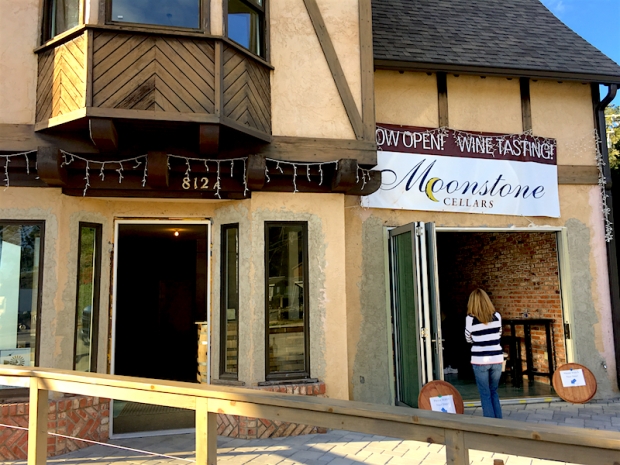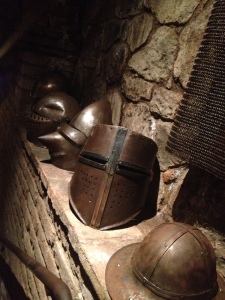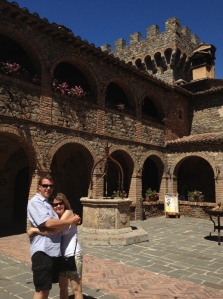Stephanie “Stephy” Terrizzi, twin daughters epitomize brand’s drive to success

When the San Francisco Chronicle published 2016 Winemakers to Watch, December 1, 2016, author Esther Mobley’s introduction pointed to characteristics that not only describes Brian and Stephy Terrizzi’s passion for Giornata Wines, but I believe describes their kids’ focus as well. I think all four have a “fearless desire to set new paradigms, a bootstrapping ambition and an attention to their craft.”
While Mobley no doubt intends the readership to discover the three other winemakers as well, and no disrespect to them at all, I couldn’t help but think that her quote describes the whole Terrizzi family. All four, including 11-year-old twin daughters, Aida and Kate, exude individual passions, are entrepreneurial-focused and driven, sharing an intense collaboration and close personal family connections.

And during my mid January visit with Stephy and Brian on their Paso Robles area property, not only did I further understand Stephy’s role as viticulturist and Brian as winemaker, but I saw their children’s love for the land, its relationship with the vineyards and winery. I ultimately came to appreciate all four individuals’ vision of enterprise.
While any blog post or article about winemakers needs to include information about their craft and product, the story behind the Terrizzis transcends a case count, Giornata’s net worth or their next and upcoming release. The family’s drive to success actually isn’t just about scores, growing the winery or financial growth.
Instead, Brian, Stephy, Aida and Kate all impressed me as they each wove stories of time spent in the vineyard, winery, soccer and tennis practice, tap dance, rock climbing and hanging out with other local winemaker families. They all spoke about new business ventures, including the next new vintage, a pasta factory in the new Tin City development plus selling soap and bath bombs.

The Terrizzis own 11 acres just south west of Paso Robles with four acres of vineyards atop a knoll. With plenty of room yet to grow Giornata Wines on the property, Stephy is in charge of their vineyards as well as the famed Luna Matta Vineyard. Brian is the winemaker, markets the wines and is forever Giornata’s dreamer.
While Brian left to pick up the kids from soccer and ballet, I walked the Giornata vineyards with Stephy as she shared her past struggles and excitement for their future plans.
On the south west to southern portion of the property, she described how disappointing it was to watch a 2013 fall Nebbiolo planting die in a December freeze, decimating the vineyard. But their loss today looks healthy and happy as the new acre and a half of Nebbiolo clones planted in 2014 have are doing well.
“Our trips and time working in Italy have shaped us,” Stephy said. “We planted Nebbiolo because of our time in Piedmont. Imagine driving the tops of the hills and those Nebbiolo vineyards in Piedmont. Most all are on the south-facing slopes. We love how well those grapes do there and believe they are an excellent fit for our property. Everything here is planted on 1103 root stock. We replanted vineyard in 2014, using FPS Clones 6 and 8 and the VCR Clone 430.
“We planted the different clones so I could tell and know the difference between all three of them,” Stephy continued. “They are all planted next to each other but we will blend them all together.”

The Giornata brand and Italian adventure really began when Brian moved to Italy to work under famed winemaker Paolo DeMarchi at Isole e Olena in Tuscany in 2003. There Brian spent three months during harvest, learning under the man who ‘changed his life.’
Brian would later tell me Paolo taught him how to connect his story with the wine, manage a staff and an insatiable desire to educate and develop a vision to create a world-class brand.

After Brian returned to the States, he met Stephy at Fresno State while studying enology, graduating in 2005. Stephy eventually took a position in 2006 in the Luna Matta Vineyard in Paso Robles. Brian continued to work in Fresno at Sam’s Italian Deli, establishing Nick’s Wine Corner and for Chambers & Chambers Wine Merchants until early 2007. Actually, this is where I first met Brian but never made the connection as our family were friends with the deli owners Sam and Angie at the time.
Giornata Wines became a full-time gig by 2007 and have focused on Italian varietals ever since.
While I spoke with Stephy about most of their premium Italian varietals offerings, on this day we spoke at length about the best varietals to plant on the Giornata property and bottling estate Nebbiolo in the next couple of years.
“The new plants have taken root and as the they go deep and look for water,” Stephy said, “they will do really well on the high Ph soils of our property. Eventually, especially on a wet year like this, we hope to dry farm the Nebbiolo.
“We bought these clones at Novavine Nursery in Santa Rosa as they are the most tried and true versions in the U.S.,”Stephy said. “I have them planted at Luna Matta as well. They’ve been around a while and have some traction behind them.”

Vineyards surround their home atop their hilltop perch. And as Stephy and I traversed the property with her mud-caked boots, a two-story rock climbing boulder/structure captured my attention as it dominated the hill.
“Kate loves rock climbing and one of our neighbors makes those structures,” Stephy said smiling and shaking her head. “While they both climb on it, its Kate’s thing.”
I nodded as it towered over us and initially obscured the chicken coup at the top of the hill.
“It’s been a tough week,” Stephy said as we walked up to the coup, “because their pet rooster ‘Red’ just died. The girls took it harder than the hens.”

While I probably said something dumb like ‘any lost egg production?’, I didn’t yet know how passionately they or their twins cared about their pets or philosophy in raising them.
Red was not just a rooster. He was a rescue and probably was nearing 10 years old. The family rescued him from an underground cock fighting organization and he was one of their prized possessions.
As we arrived at the edge of the hill on the opposite side, looking due north, we peered down on the oldest vines on the property: five rows Trebbiano, a full three years old, arguably the happiest vines on the property. Stephy went on to say they want to blend some Trebbiano in their Sangiovese with co-pigmentation. This is very typical to do in Chianti until about two years ago when the law was changed.
However, our conversation quickly morphed.

“This is a really fun place to work,” Stephy said. “We have two Italian Greyhounds who come out with me as I work in this area. They run around and catch squirrels, chase after gophers and mice.”
More sustainable practices I thought. Later she shared her admiration about the dogs. They loved the new a puppy and an 11-year-old. Both were adopted from the Italian Greyhound Rescue Foundation of Northern California.

Stephy is the viticulturist for Giornata Wines but is also the vineyard manager for Luna Matta. She grew up in the midwest in Freeport, Illinois, and, while not on a farm, on the urban edge of a farming community. Growing up she was in 4-H, could milk cows and rope cattle and staunchly insists she still can.
Her work is already well documented by blogs and WordPress sites, wine brokers and wine writer Jon Bonne wrote in his best selling book, The New California Wine: “Stephy has become the area’s great alternative vineyardist…making the most successful Nebbiolo yet in the state.”
High praise for a mom who still helps the girls make Valentine’s cards during the Monday before pink day, even though she would rather be pruning Giornata’s four acres of vineyards or on her prized Luna Matta site. But today she shared her dream and also spoke of future plans for her property.
“We would love to put in hazelnut and oak trees and start a truffle project at the bottom of this grade,” Stephy said, “but we really do not have enough water. We pump about two gallons a minute already but we have some big tanks to hold water but its not enough to do truffles.

“But at the bottom of the hill, we would like to do some bee boxes and a pig breeding project,” Stephy continued. “We already have a tack house at the bottom of the hill that used to house a horse before we bought the acreage. In fact, my daughter, Aida, wants to get involved and is saving up her money to buy a Llama. And I see 4-H in her future. Kate on the other hand will probably be a lifelong Girl Scout.”
The girls again. Later I found out, they too are entrepreneurs. With Aida taking on the ‘CEO’ role and Kate as the ‘CFO’ the twins own, operate, create, sell and deliver soap and bath bombs to their classmates, parents and occasionally to those who visit the winery. They even have participated in beauty and wellness shows in Atascadero. They take orders at school, make the products over the weekend and deliver the next week.
Their drive to create and sustain a brand takes passion, vision and a willingness to do more and do it longer than anyone else. This describes the Terrizzi family from the kids on up.

“I may also try Nerello Mascalese,” Stephy said. “I believe we can get this highly regarded Sicilian grape varietal next year on root stock. This is very exciting and I really would like to grow that. While this still might be two years away for us, we will see what happens but I definitely want some here.
“Down the road we would like to take the Trebbiano, the Friulano, and Ribolla Gialla, and do a skin contact white estate blend,” Stephy continued. “We should be able to get six tons of fruit from this property on a normal year. We can get a ton and a half of Sangiovese and two and a half to three tons of Nebbiolo.”
Giornata Wines is also known for their Sangiovese that is currently sourced from Luna Matta Vineyard and another Sangiovese crop that is farmed by a project run by James Ontiveros (formally of Bien Nacido) and Matt Turrentine. But Stephy is careful to point out that she is very picky as to how others manage their vineyards and ultimately their Sangiovese juice.
“What is really important to me is the farming aspect,” Stephy said. “We clearly live on our property and so it is important to treat the land in a respectful manner because we live here. We drink the water that we are ‘standing on top of’ right now so I don’t use herbicides at all.
“We don’t use a whole lot of anything,” Stephy continued. “Now as the grapes begin to develop, we will use fungicides but I strongly believe creating an ecosystem that is balanced. As you can see we have a cover crop of grasses. But we want to make sure we have lacewings around to keep the aphids and leafhoppers (in check) because when you do something, something else happens on the other side of the equation.”

The Giornata wines are at the highest quality tier of Italian-style wines in California.
When it comes to sustainability, Stephy also is not only focused on what is best for her vineyards but for the land she loves, lives on. Sustainability is essential to continued success and a healthy balance.
“There is only so much land and as people move to California, and I am included in that. I am not a native Californian, it is important to keep this land healthy and not saturate it with synthetic fertilizers and chemicals. We’ve read in the last five-six years about the bee population plummeting. We’ve got almond and walnut trees on this property and without the bees … well and I’ve read that we’ve only got two years worth of food … and without the bees, we will all begin to starve. That is kind of a scary thought.
“We plan to get some bees out here pretty soon in February, get those up and running. It is really important to keep this balance and not become a monoculture and not let one thing take over another. It’s important to keep the balance on the property itself from vine to vine and have everything in harmony.”

This is similar to the Terrizzi winemaking philosophy well. Like many who use biodynamic and sustainable practices, winemakers Brian and Stephy Terrizzi’s wines are natural and express a sense of place whether they are from their own properties or from area vineyards. Look for Giornata winery in the Tin City, which is quickly becoming the “epicenter of the burgeoning craft beverage community of Paso Robles,” according to developer Mike English.
Be sure to return to TalesoftheCork for Part II of the Giornata Wine story at the end of February. TalesoftheCork will further outline Brian and Stephy’s journey as they strive to create the finest Italian varietals in California. The upcoming post will detail more of Brian’s winemaker journey, latest releases and the couple’s new venture to open the summer of 2017.
Giornata Wines can be ordered via their website or and via the Tin City winery. They are located at 470 Marquita Ave., Paso Robles, CA, 93446. For more information, call their store: (805) 434.3075 or via email: info@giornatawines.com. Be sure to call, email or make online reservations in order to visit the winery. The are only open for tastings by appointment.

Be sure to read TalesoftheCork’s previous blog post, “Trelio Restaurant reopens in Clovis.” And if winemakers, wineries or restaurants are interested in a TalesoftheCork wine and/or food review on the blog, Instagram, Twitter and/or Facebook, please send us a request via email: talesofthecork@gmail.com or use DM on social media. TalesoftheCork also offers social media seminars for businesses.

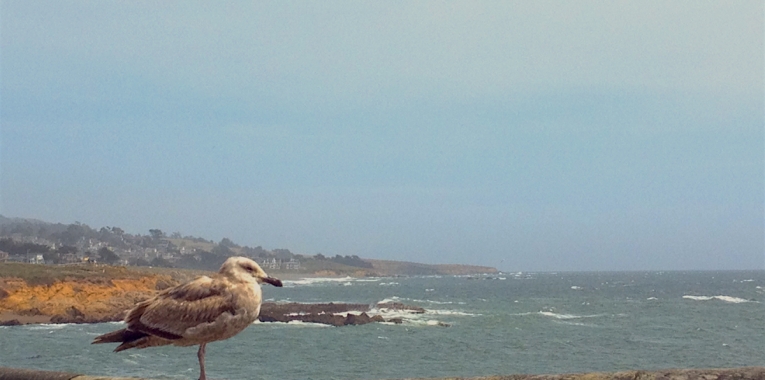
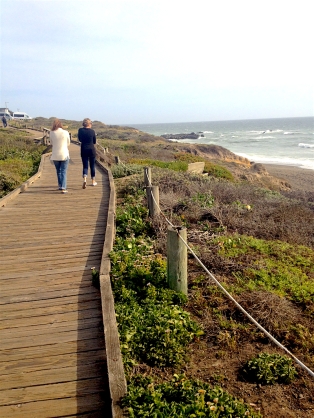 Visitors planning a trip to
Visitors planning a trip to 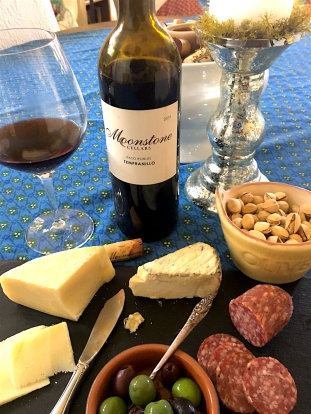 While I sipping the wine, purposely on
While I sipping the wine, purposely on 